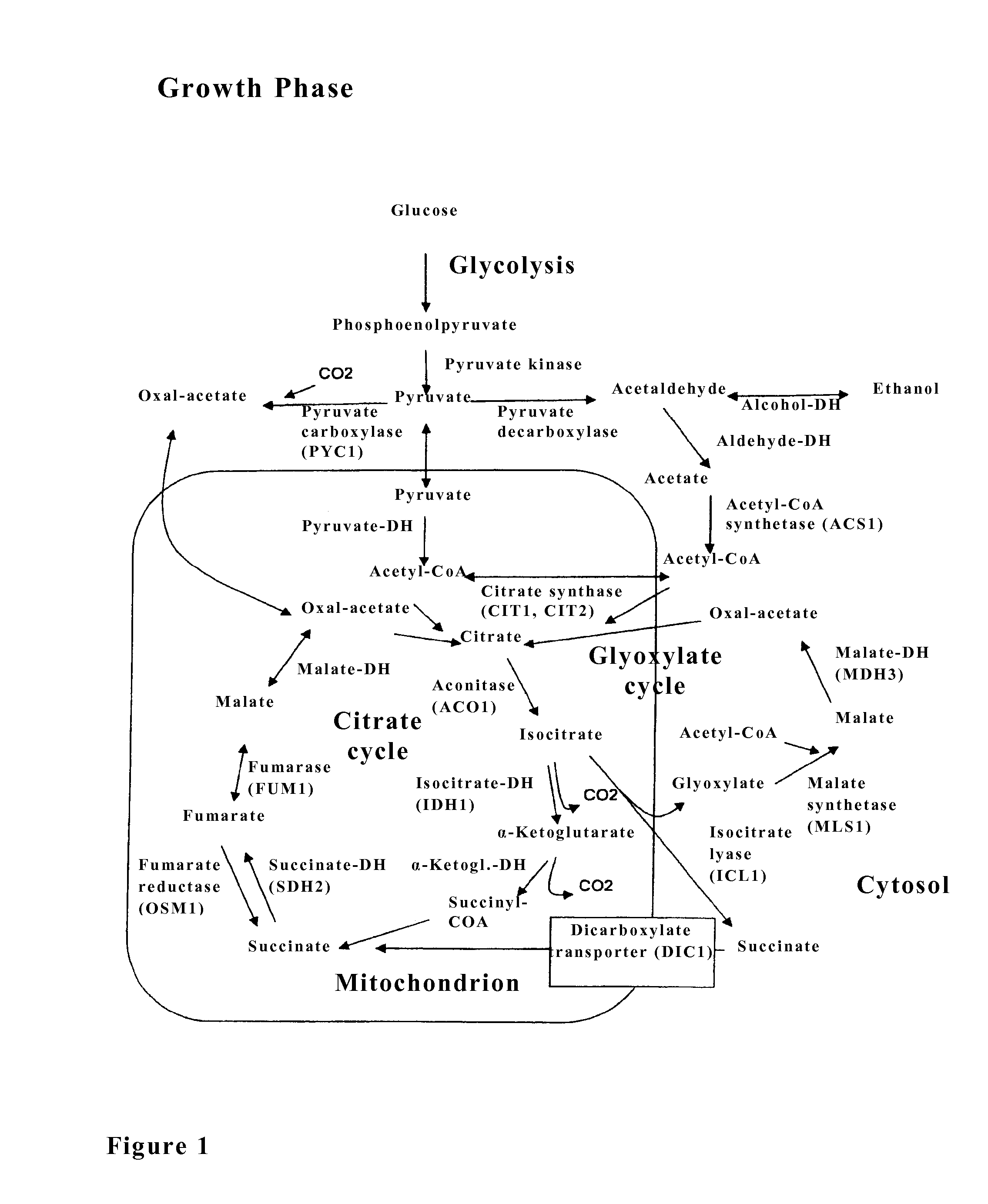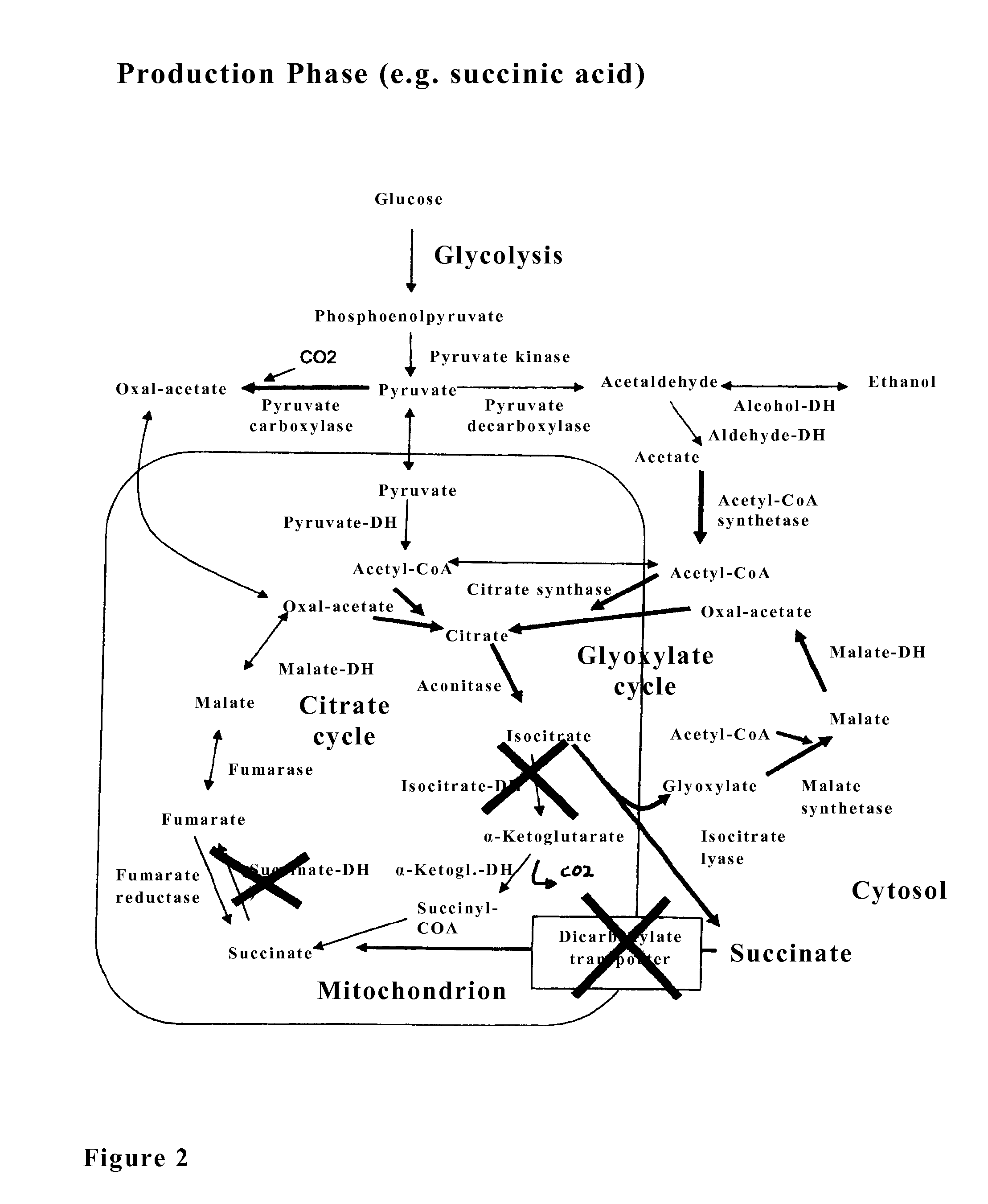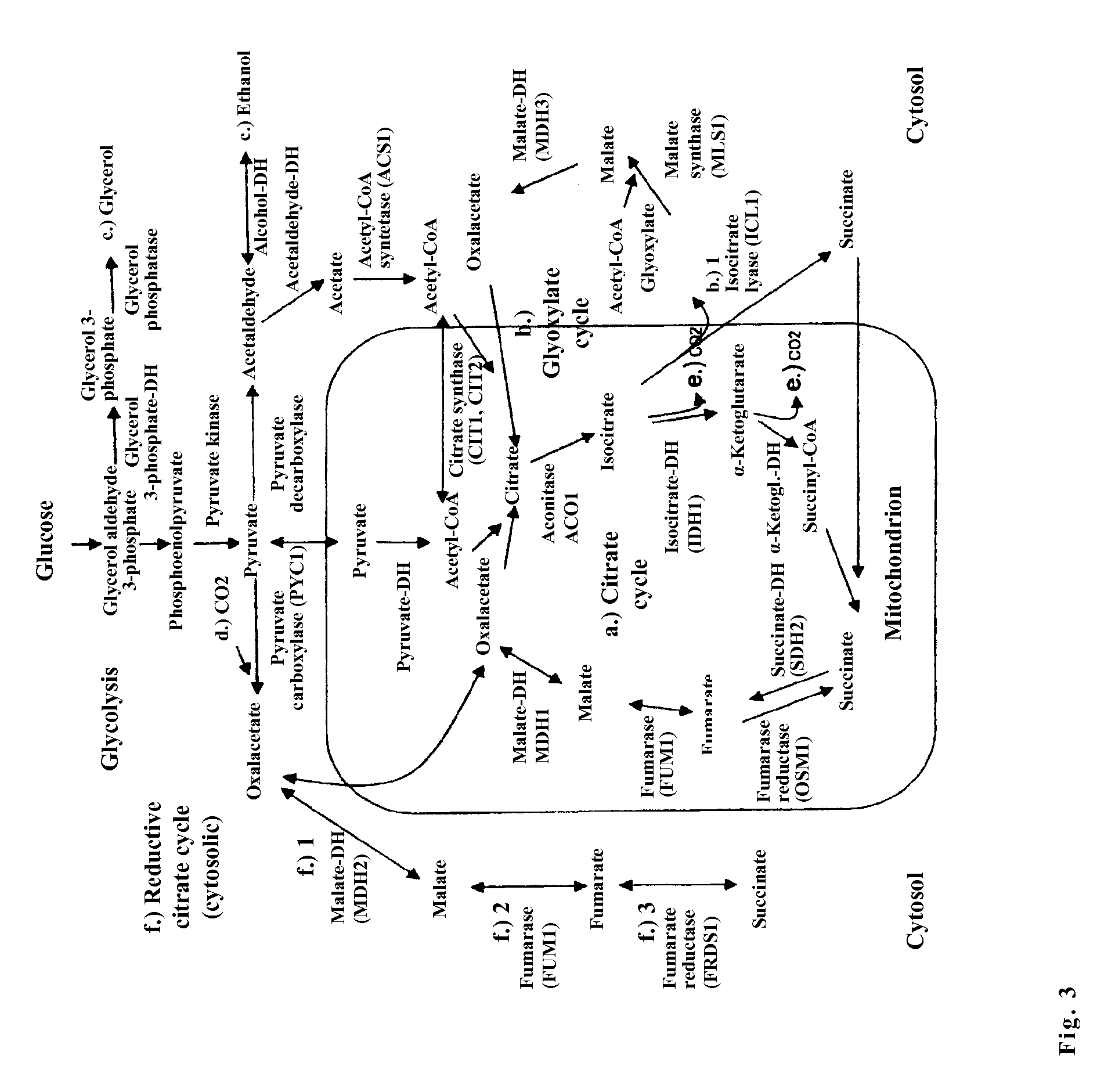Microorganism for the production of succinic acid
a technology of succinic acid and microorganisms, applied in the field of microorganisms, can solve the problems of difficult to technically handle strictly anaerobic microorganisms, low biomass/product efficiency, and limited biomass production of anaerobic microorganisms
- Summary
- Abstract
- Description
- Claims
- Application Information
AI Technical Summary
Benefits of technology
Problems solved by technology
Method used
Image
Examples
example 1
Production of a Microorganism with Tetracycline-Regulated Promotor System
[0135]In order to achieve an interruption of the citrate cycle after termination of the biomass growth, according to the invention, three genes of this metabolic pathway are controlled by promotors that can be regulated. These are the gene IDH1, which encodes the first subunit of the NAD-dependent isocitrate dehydrogenase, and the gene SDH2, which encodes for a subunit of the succinate dehydrogenase, and the gene DIC1, which encodes for the mitochondrial dicarboxylate transporter. An elimination of these enzyme activities has the consequence that isocitrate, the substrate of the glyoxylate cycle, is not transformed anymore by the citrate cycle into 2-oxoglutarate, and succinic acid is not metabolized into fumarate, and the succinate of the glyoxylate cycle is not transported anymore into the mitochondrion and is thus not fed anymore to the citrate cycle localized in the mitochondrion. Thus, the citrate cycle is...
example 2
Microorganism with Constitutively Active Succinic Acid Synthesis
[0139]Since the glyoxylate cycle and other reactions on the way to the succinic acid biosynthesis are naturally transcriptionally strongly repressed in the yeast cell in the presence of glucose, with the consequence that this biosynthesis pathway is not active, all or a selection of enzymes of this metabolic pathway and the pyruvate carboxylase, the enzyme that is responsible for the anaplerotic reaction (CO2 fixation), are transcriptionally preferably deregulated during the production phase for the biosynthesis of succinic acid from glucose. For the deregulated expression of the genes in the yeast Saccharomyces cerevisiae, the constitutive ADH1 promotor is used, which leads by modification of the natural sequence for a very long time to a constitutive expression independent from glucose and ethanol (see Lang C., Looman A. C., Appl Microbiol Biotechnol. 44(1-2):147-156 (1995). Transcriptionally deregulated are the genes...
example 3
Expression of the Transcriptional Transactivator Under the Control of the CMV Promotor at the Locus LEU2 in S. Cerevisiae GRFura3
[0142]The encoding nucleic acid sequence for the tTA-expression cassette was amplified by PCR standard methods, so that the resulting fragment consists of the following components: loxP-kanMX-loxP-CMVprom.-tTA (YEAST 20:1255-1262, 2003). As primers, oligonucleotide sequences are chosen that at the 5′ and 3′ overhangs respectively contain the 5′ or the 3′ sequence of the LEU2 gene and in the annealing section the sequences 5′ of the loxP region and 3′ of the tTA gene. Thus it is secured that on the one hand the complete fragment including KanR and tTA is amplified and on the other hand this fragment can then be transformed into yeast and by homologous recombination this complete fragment is integrated in the LEU2 gene locus of the yeast.
[0143]As a selection marker serves the resistance against G418. The resulting strain S. cerevisiae GRFura3 tTA contains a ...
PUM
| Property | Measurement | Unit |
|---|---|---|
| concentration | aaaaa | aaaaa |
| cell density | aaaaa | aaaaa |
| cell density | aaaaa | aaaaa |
Abstract
Description
Claims
Application Information
 Login to View More
Login to View More - R&D
- Intellectual Property
- Life Sciences
- Materials
- Tech Scout
- Unparalleled Data Quality
- Higher Quality Content
- 60% Fewer Hallucinations
Browse by: Latest US Patents, China's latest patents, Technical Efficacy Thesaurus, Application Domain, Technology Topic, Popular Technical Reports.
© 2025 PatSnap. All rights reserved.Legal|Privacy policy|Modern Slavery Act Transparency Statement|Sitemap|About US| Contact US: help@patsnap.com



